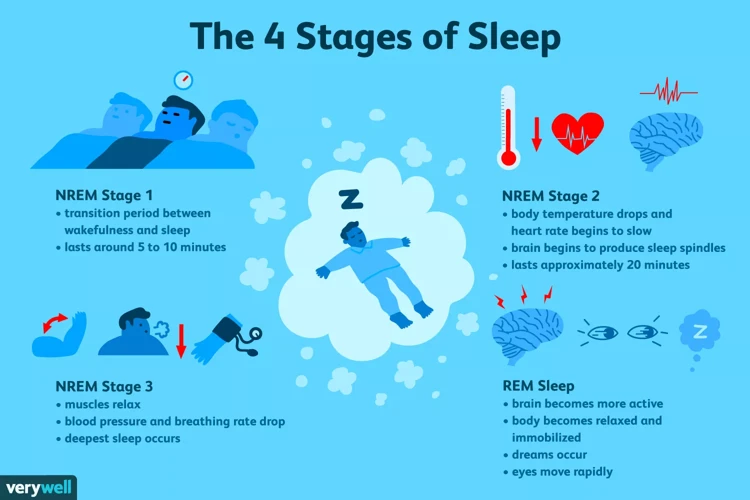Have you ever woken up with a fuzzy memory of a dream, only to find that the details slip away as you start your day? Have you ever wished you could remember your dreams more vividly or even control them? Dream recall can be an elusive phenomenon, but it is essential for those interested in lucid dreaming or exploring the subconscious mind. Fortunately, one technique that can help improve dream recall is the practice of reality checks. By training the brain to question whether one is awake or dreaming, reality checks can promote greater awareness and memory of dream experiences. In this article, we will explore the science of dream recall and how reality checks can enhance this process. We will also provide tips for creating a reality check habit, as well as additional strategies for improving dream recall and using reality checks for lucid dreaming.
Contents
- The Science of Dream Recall
- Creating a Reality Check Habit
- Tips for Better Dream Recall
- Lucid Dreaming and Reality Checks
- Conclusion
-
Frequently Asked Questions
- What are reality checks?
- How do reality checks improve dream recall?
- Which reality check method is the most effective?
- What are some common reality check methods?
- How often should I perform reality checks?
- What are reality check triggers?
- What is a dream journal?
- What is sleep hygiene?
- What is lucid dreaming?
- How can lucid dreaming benefit me?
- References
The Science of Dream Recall

Understanding the mechanisms behind dream recall can be a perplexing topic for many. However, it can be crucial for those who wish to improve their dream recall and gain a better understanding of the workings of their own mind. By delving into the science behind it, we can gain insight into how our brain processes and stores memories during sleep, and how this information can be utilized to enhance our recall abilities. Let’s explore the fascinating world of dream recall and the science that underlies it.
REM Sleep and Memory Consolidation
During REM sleep, our brain activity is heightened and becomes more similar to that of our waking state. During this stage, we are also more likely to experience vivid and complex dreams. Research has shown that the process of memory consolidation, where short-term memories are transferred to long-term storage, primarily takes place during REM sleep.
Here’s how it works:
- Short-term memories are initially recorded in the hippocampus, a region in the brain responsible for memory formation.
- During REM sleep, the brain replays and consolidates these memories, strengthening their neural connections and integrating them into existing knowledge networks.
- This process helps us retain and recall memories better.
It is important to note that the quality of our sleep, including the amount and timing of REM sleep, can greatly affect our ability to consolidate memories. Disruptions to our sleep, such as frequent waking or sleep deprivation, can impair this process and negatively impact our memory recall.
How Reality Checks Affect the Brain
Research has shown that reality checks can have a significant impact on the brain’s ability to recognize and remember dreams. By performing regular reality checks throughout the day, individuals can train their brains to become more aware of when they are dreaming.
The reason why this happens is because reality checks encourage critical thinking, which can lead to higher levels of self-awareness. When individuals question their surroundings and whether or not they are dreaming, they are forcing their brains to analyze the environment more closely.
As a result, the brain becomes more active and alert, simultaneously enhancing its capacity to retain memories. By repeatedly performing reality checks, individuals are effectively training their brains to recognize and remember the unique experience of dreaming.
Studies indicate that reality checks can also increase the chances of having lucid dreams, which are dreams in which the dreamer is aware of the fact they’re dreaming. This is because the regular practice of reality checks can condition the brain to recognize the specific signs that indicate a dream state, such as seeing unusual objects or experiencing abnormal sensations.
In addition, reality checks can also activate certain regions of the brain that are responsible for cognitive processing, such as the prefrontal cortex. This can lead to greater mental clarity and better decision-making abilities not only in dreams but also in daily life.
The following table summarizes the effects of reality checks on the brain:
| Impact of Reality Checks on the Brain | Description |
|---|---|
| Increased self-awareness | Encourages critical thinking, leading to higher levels of self-awareness |
| Improved memory retention | Enhances the brain’s capacity to retain memories |
| Higher chances of lucid dreaming | Conditions the brain to recognize dream states and increase the ability to have lucid dreams |
| Better cognitive processing | Activates cognitive processing regions of the brain, leading to better mental clarity and decision-making abilities |
Creating a Reality Check Habit

When it comes to improving dream recall, creating a regular reality check habit is a crucial step. But for those new to the concept, it can be overwhelming to figure out where to start. With so many methods available, how do you choose which one to focus on? And once you’ve picked a method, how do you make sure you remember to do the checks during the day? In this section, we’ll go over some tips and techniques to help you create a successful reality check habit that works for you.
Choosing a Reality Check Method
When it comes to choosing a reality check method, there are several options available. One approach is to focus on discrepancies between reality and the dream state. For example, you might ask yourself throughout the day, “Am I dreaming?” and then try to spot things that seem out of place.
Alternatively, you can choose a specific trigger that will prompt you to do a reality check. This could be something like looking at your watch, walking through a doorway, or seeing a particular color. Whenever you encounter your chosen trigger, take a moment to question whether or not you are dreaming.
Another option is to incorporate reality checks into your pre-sleep routine. As you prepare for bed, choose a few actions that you typically do in your dreams (such as flying or talking to animals) and try to perform them in real life. This can help train your brain to recognize when you are in a dream state.
Ultimately, the key to choosing a reality check method is to find one that works for you and that you can consistently practice. This will help you build a habit of questioning your reality and increase the likelihood of having a lucid dream.
Setting Reality Check Triggers
Setting Reality Check Triggers
Once you have chosen a reality check technique that works best for you, it’s important to set triggers throughout the day to remind yourself to perform the check. This will help you develop a habit of reality checking, which can improve your dream recall and increase your chances of having lucid dreams.
Here are some examples of reality check triggers you can use:
| Trigger | Explanation |
|---|---|
| Every time you walk through a doorway | This is a common trigger because it happens frequently throughout the day, especially if you’re in a building with multiple rooms. |
| When you hear a certain sound | You can choose a specific sound, such as a phone ringing or a dog barking, that will trigger your reality check. |
| When you see a specific object | You can choose an object, such as a watch or a pen, that you will see frequently throughout the day to trigger your reality check. |
| When you feel a specific sensation | You can choose a physical sensation, such as the sensation of walking or the feeling of hunger, that will trigger your reality check. |
It’s important to choose triggers that are specific and meaningful to you. This will make the reality check more effective and increase the likelihood that you will remember to perform it.
Remember to perform the reality check not just when the trigger occurs, but also when you are dreaming. This will help you develop a habit of reality checking in your dreams and increase your chances of having a lucid dream.
Tips for Better Dream Recall

Dream recall is an essential skill for anyone seeking to improve their understanding and control of their dreams. However, not everyone has an excellent natural ability to remember their dreams, and it can be frustrating to try to build good dream recall. Nonetheless, with the right tips and techniques, you can boost your dream recall capabilities and make the most of your sleeping hours. In this section, we’ll explore some effective tips and strategies for improving dream recall that you can start using today. Let’s dive in!
Maintaining a Dream Journal
Keeping a dream journal is a crucial step towards improving dream recall. It helps in the process of creating a habit of remembering and keeping track of our dreams. By writing down our dreams, we can better understand the patterns and themes that arise in our dreams. This is particularly useful for those who wish to explore lucid dreaming because it allows for a better understanding of one’s subconscious mind.
Here are a few steps you can follow to maintain an effective dream journal:
| Step 1: | Keep your journal by your bedside, along with a pen or pencil. |
| Step 2: | As soon as you wake up, write down everything you can remember about your dream, no matter how fragmentary or incomplete it may seem. |
| Step 3: | Be sure to record the date and time of day when you woke up. |
| Step 4: | Use descriptive language and vivid imagery to capture your dream experiences as accurately as possible. Note down any emotions or feelings you recall experiencing during the dream. |
| Step 5: | Include any relevant details, such as people or places you recognize, as well as any recognizable symbols or recurring themes. |
| Step 6: | Try to write down your dreams in the present tense as this helps the brain to better recall the experience of the dream. If you can’t recall specific events from the dream, you can write down any impressions or general feelings you had upon waking up. |
| Step 7: | Repeat the process for each dream you remember having, even if it’s just a vague feeling or image. The more you practice this, the better your dream recall will become. |
It’s important to remember that maintaining a dream journal can be a personal experience, and there’s no right or wrong way to do it. What’s important is that you feel comfortable and able to capture the essence of your dreams in a way that works for you. By following the above steps, you will be on your way to better dream recall and an understanding of your subconscious mind.
Improving Sleep Hygiene
Sleep hygiene refers to the habits and practices that can impact the quality of our sleep. Improving sleep hygiene can not only lead to better dream recall but also to a more restful and rejuvenating sleep experience in general. Here are some tips for improving sleep hygiene:
| Tip | Explanation |
|---|---|
| Avoiding caffeine and alcohol | Caffeine and alcohol can disrupt the sleep cycle and decrease the quality of REM sleep, which is key to dream recall. |
| Limiting screen time before bed | The blue light emitted by screens can suppress the production of melatonin, a hormone essential for sleep. It is recommended to stop screen usage at least an hour before bedtime. |
| Creating a comfortable sleep environment | A comfortable mattress and pillows, a cool and quiet room, and minimal external stimuli (such as light or noise) can help improve the quality of sleep. |
| Establishing a regular sleep routine | Going to bed and waking up at the same time every day, even on weekends, can help maintain a consistent sleep/wake cycle. |
| Exercising regularly | Regular physical activity can help regulate the sleep cycle and improve the quality of sleep. However, it’s best to avoid vigorous exercise right before bedtime. |
By implementing these tips and practices into your daily routine, you can improve your sleep hygiene and maximize your chances of having more vivid and memorable dreams.
Using Mnemonics and Visualization
Mnemonics and Visualization Techniques for Improved Dream Recall
In addition to the reality check habit, there are other techniques that can be used to improve dream recall. Mnemonics and visualization are two effective methods that can be incorporated into your dream recall routine.
Mnemonics are memory aids that help make information easier to remember. This technique can be applied to dream recall by associating a specific phrase or keyword with each dream. For example, if your dream involved flying, you could use the phrase “I flew in my dream” as a mnemonic. Repeat this phrase several times throughout the day to help reinforce the memory and improve recall.
Visualization involves creating a mental image of a dream to help solidify the memory. After waking up, take a few minutes to visually replay the dream in your mind. Try to recall as many details as possible, such as the setting, characters, and the sequence of events. You can also enhance the visualization by drawing a sketch of the dream or creating a storyboard. This not only helps with retention but also allows for a more immersive experience.
To combine these techniques, you can create a memory palace or Memory Journey. This involves associating specific details about your dream with physical locations in a familiar place like your house. For instance, you could associate the keyword “Flying” with your bedroom and visualize a detailed image of yourself flying around the room. This not only helps with recall but also adds an additional layer of visualization to the process.
Using mnemonics and visualization techniques can greatly improve your dream recall. With practice and repetition, you can create a strong association between your dreams and the mnemonic phrase or visualization, allowing for effortless recall in the future.
Lucid Dreaming and Reality Checks
As we’ve explored earlier, reality checks can have a profound impact on enhancing dream recall. However, there’s an even more exciting benefit to incorporating reality checks into your daily routine – lucid dreaming. By consistently performing reality checks in your waking life, you can train your brain to perform the same reality checks in your dreams. The result? A heightened sense of awareness and control during your dream state, leading to truly unforgettable experiences. Let’s dive deeper into the power of reality checks for lucid dreaming.
Building Awareness and Control
When it comes to lucid dreaming, a key aspect is developing both awareness and control in your dreams. This can be achieved through practicing reality checks both during waking life and within your dream state.
Here are some techniques to develop awareness and control in your lucid dreams:
| Technique | How it can help |
|---|---|
| Intention Setting | Setting the intention to have a lucid dream before going to sleep can help to increase awareness during the dream state. |
| Dream Signs | Paying attention to recurring dream signs or events can help to trigger awareness during a dream. |
| Meditation | Practicing meditation can increase overall mindfulness and awareness, which can transfer into the dream state. |
| Reality Checks | Continuing to practice reality checks within your dreams can increase your ability to recognize when you are dreaming. |
| Visualization | Visualizing yourself becoming lucid within a dream can help to build confidence and control in the dream state. |
By using these techniques, you can begin to build a stronger sense of awareness within your dreams and begin to control and shape the dream experience. This can lead to more fulfilling and interesting lucid dream experiences.
Enhancing the Lucid Dreaming Experience
Once you have established a regular reality check habit and are able to lucid dream more frequently, you may want to consider ways to enhance the experience even further. Here are some tips for enhancing your lucid dreaming experience:
- Set intentions: Before going to sleep, set a clear intention for what you want to experience in your lucid dream. This could be as simple as wanting to fly or explore a specific environment, or as complex as wanting to work through personal issues or gain insights about your subconscious.
- Try different techniques: There are many techniques you can use to control and manipulate your lucid dreams, such as spinning around, focusing on your hands, or simply visualizing what you want to happen. Experiment with different techniques and find what works best for you.
- Use affirmations: Repeating a phrase or affirmation to yourself can help solidify your intention and help you maintain awareness in the dream. This could be something like “I am in control of my dream” or “I am aware that I am dreaming.”
- Engage all your senses: In a lucid dream, you have the ability to engage all your senses, so take advantage of this! Feel textures, smell scents, taste foods, and listen to music. This can make your dream feel more vivid and real.
- Stay calm and focused: It can be easy to get excited or overwhelmed when you realize you’re lucid dreaming, but try to stay calm and focused. Remember that the dream world is under your control and you have the power to shape it as you wish.
By using these techniques, you can enhance your lucid dreaming experience and make the most of your heightened awareness in the dream world. Remember, lucid dreaming takes practice and patience, but with dedication and persistence, anyone can achieve this incredible state of consciousness.
Conclusion
In conclusion, incorporating reality checks into your daily routine can greatly improve your dream recall and ultimately lead to more frequent and vivid dreaming experiences. The science behind dream recall and memory consolidation during REM sleep highlights the importance of regularly checking the reality of your surroundings in order to establish a habit of mindfulness and awareness.
By choosing a reality check method that resonates with you and setting triggers to remind yourself to perform these checks throughout the day, you can effectively train your brain to take notice of discrepancies between your waking and dreaming states. This heightened awareness can lead to a better ability to recognize when you are dreaming, ultimately leading to more opportunities for lucid dreaming.
In addition to reality checks, maintaining a dream journal and focusing on good sleep hygiene can also contribute to better dream recall. By recording your dreams immediately upon waking and committing them to memory, you can increase the likelihood of remembering as much detail as possible. And by creating a peaceful, comfortable sleep environment and maintaining a consistent sleep schedule, you can improve the quality and quantity of your REM sleep.
Finally, lucid dreaming can be an exciting and rewarding experience that allows for enhanced control and exploration within the dream world. By practicing reality checks and building awareness throughout waking life, you can increase your chances of achieving lucidity during dream states.
So why not give reality checks a try? With a little dedication and perseverance, you may find yourself unlocking new levels of dream recall and lucid dreaming potential.
Frequently Asked Questions
What are reality checks?
Reality checks are techniques used to distinguish between waking reality and dreaming.
How do reality checks improve dream recall?
Reality checks increase self-awareness, helping individuals recognize when they are in a dream state and facilitating the process of remembering and recalling dreams upon waking.
Which reality check method is the most effective?
The effectiveness of reality check methods can vary between individuals. Experiment with various techniques to find the one that works best for you.
What are some common reality check methods?
Common reality check methods include pinching your nose and trying to breathe, looking at a clock or written text twice, and examining your reflection in a mirror.
How often should I perform reality checks?
It is recommended to perform reality checks consistently throughout the day, at least every few hours, to build the habit and increase the likelihood of performing them in a dream state.
What are reality check triggers?
Reality check triggers are environmental cues or situational prompts that remind you to perform a reality check, such as when entering a new room or hearing a specific sound.
What is a dream journal?
A dream journal is a record of your dreams, including details such as emotions, settings, and characters. Keeping a dream journal can improve dream recall and aid in the analysis of dream patterns.
What is sleep hygiene?
Sleep hygiene refers to the habits and practices that promote healthy and restful sleep, such as maintaining a regular sleep schedule, avoiding caffeine and alcohol before bed, and creating a peaceful sleeping environment.
What is lucid dreaming?
Lucid dreaming is the state of being aware that you are dreaming and having conscious control over the dream environment and events.
How can lucid dreaming benefit me?
Lucid dreaming can provide a unique opportunity for self-exploration, creative problem solving, and even physical practice and skill improvement in a safe and controlled environment.







